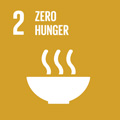- Docente: Stefano Tartarini
- Credits: 9
- SSD: AGR/03
- Language: Italian
- Moduli: Stefano Tartarini (Modulo Mod 1) Luca Dondini (Modulo Mod 2)
- Teaching Mode: In-person learning (entirely or partially) (Modulo Mod 1); In-person learning (entirely or partially) (Modulo Mod 2)
- Campus: Bologna
- Corso: Second cycle degree programme (LM) in Plant and Agricultural Biotechnology (cod. 6787)
Learning outcomes
The main learning outcomes of these lectures can be summarized as follows: i. to understand problematics related to fruit tree breeding from the characterization of genetic diversity to the knowledge of the bases of the main biotechnology techniques; ii. to improve the student’s knowledge about the main biotechnology applications in fruit tree species, the main in vitro culture applications to support fruit tree breeding as well as the main genetic modification applications in fruit trees
Course contents
Module 1: Biotechnology applied to fruit trees breeding
1) Fruit trees breeding. Peculiarity of fruit trees breeding. Biodiversity: origin centers, collection and preservation. Ideotypes and breeding process in fruit crops. Double pseudo-testcross. Breeding methods in self-compatible, self-incompatible and dioecious species. Spontaneous mutations and chimerism. Clonal selection. Induced mutations.
Genetic control and breeding methods for the main fruit crop traits: environmental adaptation, growth habit, reproduction biology, yield components, fruit quality traits, disease resistance. Rootstock breeding. Principles of the fast- and fast-track breeding.
2) Fruit tree biotechnology. Introduction to fruit tree biotechnology and applications of molecular markers in fruit tree species: genetic diversity, construction of molecular maps in fruit trees and identification of markers linked to traits, marker-assisted selection. Fruit trees genomic sequences. Identification of genes in fruit tree species by positional cloning.
Practical works (Module 1 - 24 hours) – Visits to germplasm collections and breeding plots. Controlled crosses technique and seedling management and evaluation (i.e. resistance tests). Construction of molecular maps and QTL analysis in fruit trees. Databases of genomic fruit tree sequences and sequence analysis tools. Genetic diversity analysis in fruit trees.
Module 2: Biotechnology approaches of in vitro culture in fruit trees
Principles of in vitro culture in fruit trees. In vitro morphogenesis and regeneration. Organogenesis and embryogenesis. Cell suspension culture. Somaclonal variation and early selection in vitro. Protoplasts and somatic hybridisation. Haploids. Genetic transformation in fruit trees and NBT applications (cisgenesis, intragenesis, early flowering and DNA editing (CRISPR).
Practical works (Module 2 - 12 hours) – Explant sterilization and start of the in vitro culture. Micropropagation and in vitro morphogenesis in fruit tree species. Application of a genetic transformation experiment in fruit trees.
Pre-requisite: Students entering this course need the base knowledge on plant genetics and breeding for the understanding of the subject matter of the course
Readings/Bibliography
Handouts and selected scientific papers.
Teaching methods
The course features up to 60% of the hours in the classroom, and the remaining 40% as practical activities in fields and labs.
Assessment methods
The student preparation is assessed via an oral exam, covering all teaching units. The goal of the evaluation is to assess the overall knowledge acquired by each student and their capacity to recognize and address problems related to fruit tree breeding and biotechnology. The evaluation consists on two questions on the course content. The length of the oral exam is about 20-30 minutes.
Students with SLD or temporary or permanent disabilities: it is recommended to contact the dedicated University office (https://site.unibo.it/studenti-con-disabilita-e-dsa/it) in time. The office will propose to the students any adaptations, which must in any case be submitted, 15 days in advance, to the approval of the teacher, who will evaluate its opportunity in relation to the educational objectives of the course.
Teaching tools
PC, Beamer, web connection, equipment in the biotechnology lab, field and greenhouse visits.
Office hours
See the website of Stefano Tartarini
See the website of Luca Dondini
SDGs




This teaching activity contributes to the achievement of the Sustainable Development Goals of the UN 2030 Agenda.
